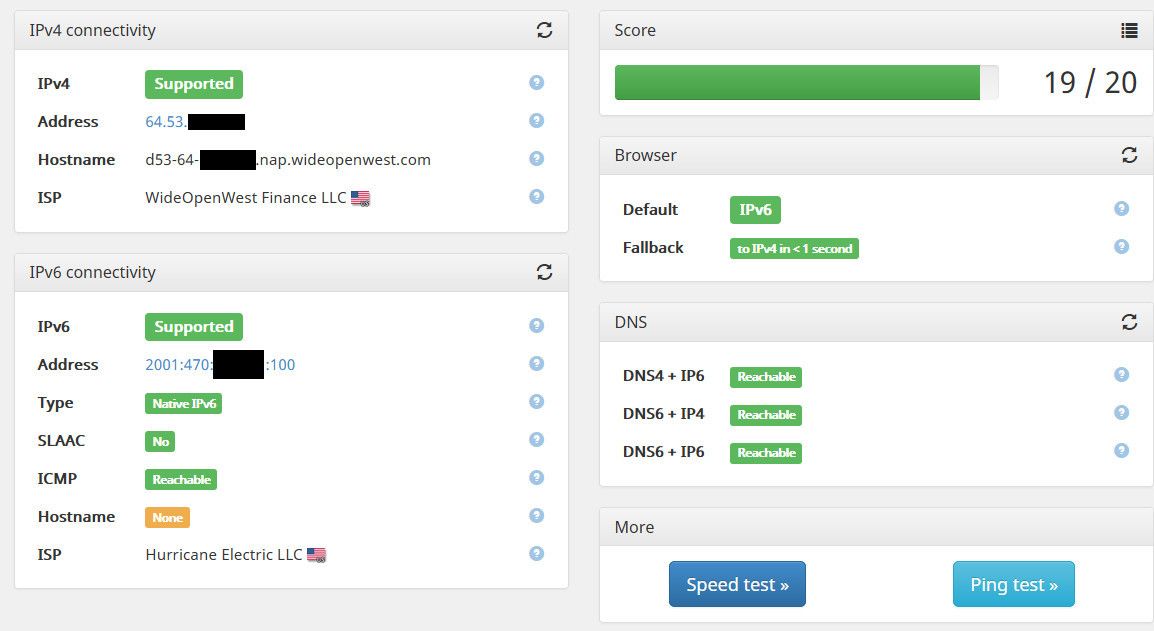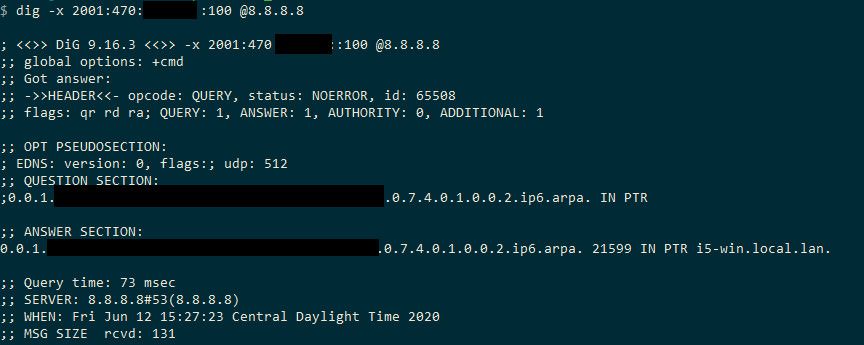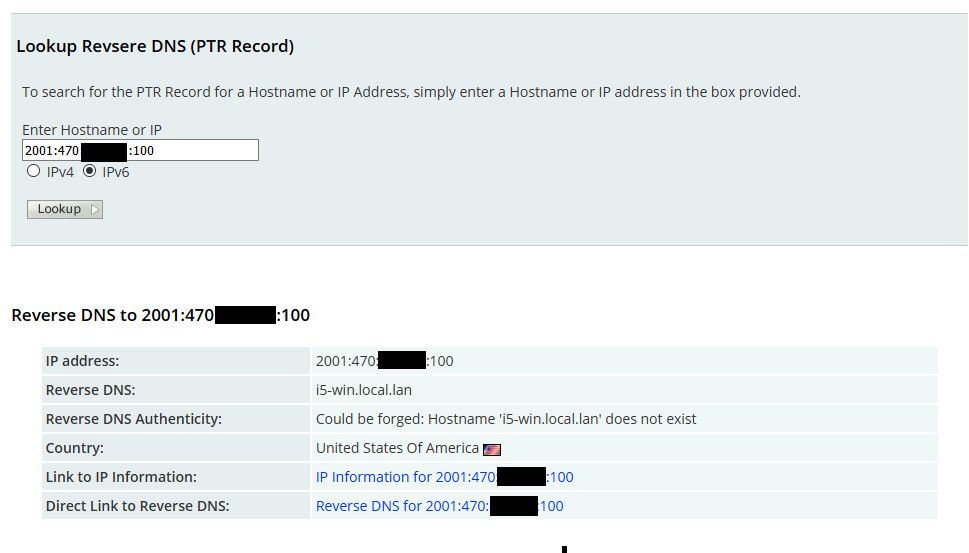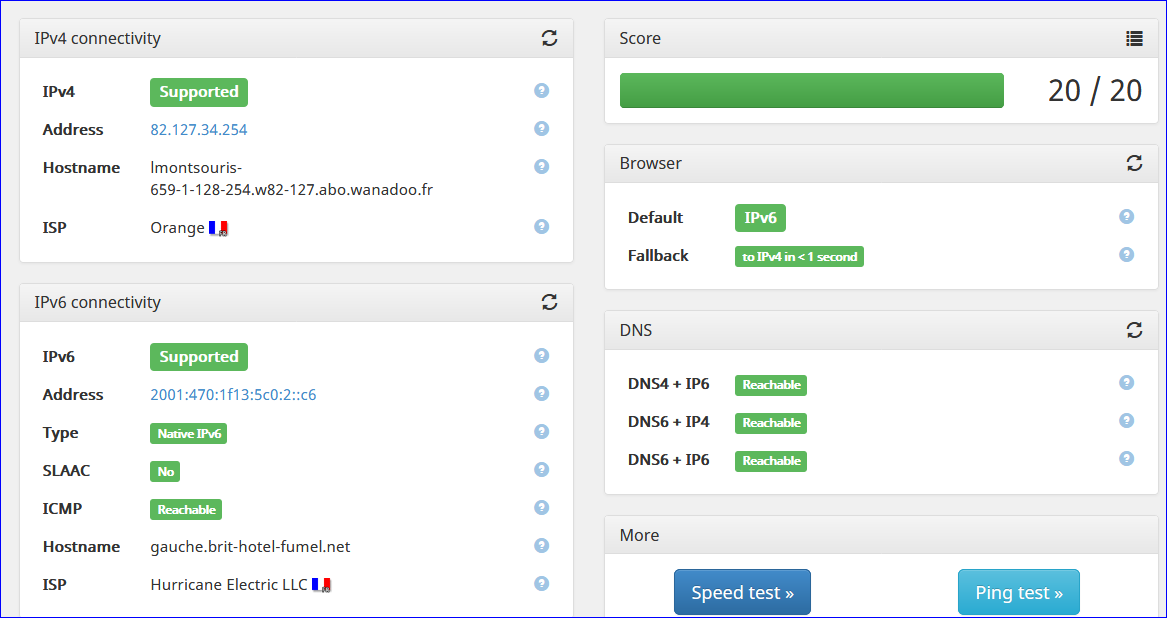2.4.4 ICMPv6 Firewall Rules?
-
The way I read that since set to OS, is that freebsd doesn't support it as of yet. So not really a "pfsense" thing that could be fixed.
-
@johnpoz Agreed. I'm a bit surprised as FreeBSD is the basis for router code.
But it does expose the lack of clarity of what functionality is or is not available. If a product claims to support IPv6 but is missing part of the protocol suite that needs to be documented somewhere instead of needing to hunt it down across several domains of dependency (OS, pfSense, OEM, etc.). Having a section listing known limitations, e.g. incomplete protocol suite/RFC implementation would REALLY help.
-
I think your confused about multicast.. Routers don't need to do shit with that.. multicast is suppose to be on the L2...
Membership management for multicast is not really something a router has to do or support.. Do that on your switch! ;) Ie your L2 device..
-
@johnpoz Not with IPTV. The multicast streams must pass the firewall. Also, if you have multicast inside the firewall they need to traverse VLANS. Where are the VLANS terminated? pfSense.
Routers, and thus the reason IGMP proxy exists as a package, must be coordinated by all devices, especially routers, not just switches, when different segments must be traversed.
-
That is why IPTV providers gives you their own shit ;)
-
@johnpoz Well even without IPTV, I've led multicast video deployments on internal enterprise networks, and as stated, traffic must traverse vlans and routers too. pfSense is a critical router if VLANS are terminated there.
IPv4 made us complacent about multicast, it was easy to ignore, but with IPv6 it's an integral part of the protocol stack and piecemeal protocol stack implementations are not helping. We need to up our game.
All I'm asking is for a call-out in the docs of where the known holes are instead of having to find them on our own.
/end rant ;-)
-
@johnpoz said in 2.4.4 ICMPv6 Firewall Rules?:
multicast is suppose to be on the L2...
Multicast can pass through routers, but that must be arranged for. That is normally done with IGMP on IPv4 or MLD on IPv6.
-
@JKnott That's the point, MLDv2 is not supported on FreeBSD yet, thus pfSense can't handle the IPv6 multicast routing properly.
https://redmine.pfsense.org/issues/6228
-
@JKnott Hmm. I just found this: https://www.freebsd.org/releases/8.0R/relnotes.html
"The IGMPv3 and SSM (Source-Specific Multicast) including IPv6 SSM and MLDv2 have been added."
Since pfSense is running on 11.x now (I think) then that feature request must be blocked by something else.
-
The confusion for me, comes from third party sites and their "tests."
If I don't create a rule on my WAN to allow Any to my computer on ICMPv6, the following site will show a "not tested" for ICMP and instruct me to adjust my firewall:
https://ipv6-test.comI see the rejected entry in my logs for that test.
If I create the rule to allow that connection, I show as passing and I can see that request pass through my firewall to my computer.
But that begs the question, what exactly are they testing? Are they sending a ping request without me initiating the connection? Because I believe that's not valid for how IPv6 is designed to work correct?
Here's an example of what they show when I don't create a specific rule to allow ICMPv6 through my firewall:

-
If you want to allow icmp through pfsense to your IPv6 clients - yes you would have to allow that.
Pfsense out of the box does not allow icmp echo requests to it or through it out of the box.. Doing so would be a horrible IDEA.. Out of the box no unsolicited inbound traffic is allowed or answered..
Other than the min required to say get an IPv6 address.. on your wan, which is not a echo request for sure.
But its simple enough to fix - see my test..

I am curious how they are doing their PTR test though.. Because my IPv6 address does have a PTR setup..


That resolves on the public internet, but they are saying there isn't one.. Maybe because it doesn't resolve? I will check on it later, and change it so forward matches and is valid domain see if that fixes their test site result.
request pass through my firewall to my computer.
You have to make sure the IP your pinging firewall also allows it... Just because you allow it through pfsense doesn't mean the clients firewall will answer.
-
Thank you for the reply @johnpoz
I agree that is is easy enough to fix, and I end up getting the same test results as you once I allow ICMPv6 Any to Any.
I also get the same result with Hostname being "none." In my case, I get no answer with a public DNS like 8.8.8.8, but my pfSense DNS resolver does return an answer.
I do still have the question on what is required by IPv6 to function properly. Going back to a previous quote of yours in this thread:
The required icmpv6 stuff for ipv6 to work on wan - is there!!! Same goes for lan side for clients to find pfsense as their ipv6 gateway.. There is NOTHING you need to add..
All other to wan would be blocked out of the gate - if you want to allow actual ping response.. Then you can add that.. Same sort of thing goes if you want to allow into your lan from outside..That makes perfect sense. But does IPv6 want ICMPv6 to be allowed through the WAN in order for it to function properly? Because IPv6 seems to be functioning just fine without that rule. The only issue I've seen is this one site saying that test isn't passing. But who knows... I may have some issues where I can't connect properly to some IPv6 endpoints because they can't properly send ICMP packets and I'm simply reverting to IPv4 and not noticing any delays due to happy eyeballs.
-
ICMPv6 is important for Path MTU discovery since there's no fragmentation allowed in IPv6.
If you are to allow ICMP inbound (as it could come from an intermediate router) then the solution to address security concerns is to rate-limit ICMP requests to guard against flooding or scanning.
http://shouldiblockicmp.com/ is not a definitive source but it raises valid arguments in favor on reasonable inbound ICMP requests.
-
Thank you @lohphat, that link was helpful.
I'm on board with allowing and limiting. Is there a way to rate-limit ICMP requests within pfSense?
I see some advanced settings like "Max. src. conn. Rate" and "Max. src. conn. Rates" for my ICMP allow rule, but these limiters say they're for TCP only which won't help with ICMP.
-
@OffstageRoller said in 2.4.4 ICMPv6 Firewall Rules?:
I allow ICMPv6 Any to Any.
For my device called "Gauche", this will do :


I had to create a rule on the device, a PC, in the Windows firewall so it would accept ICMPv6 request from "all over the planet".
-
@johnpoz said in 2.4.4 ICMPv6 Firewall Rules?:
Other than the min required to say get an IPv6 address..
Don't forget about path MTU detection. You need to allow for that.
-
That is not an inbound thing.. That would be the client going outbound. Which default is any any!!
Their statement
"Your router or firewall is filtering ICMPv6 messages sent to your computer. An IPv6 host that cannot receive ICMP messages may encounter problems like some web pages loading partially or not at all."Is just full of SHIT.. you pinging me, has zero to do with anything... And all they are doing is pinging..
-
@johnpoz said in 2.4.4 ICMPv6 Firewall Rules?:
Is just full of SHIT.
I agree. The "hostname" known or not, and that ping-thing, do not belong on that test page ....
-
The VAST majority of users have zero control over their PTR.. And has zero to do with being a client on the internet.. Sure if your running a mail server or something then you need to make sure your PTR is in order.
Mine finely showed up on that site btw.. They must of cached the NX, since I had set it after got a none..
But they are clearly posting FUD that if your IP doesn't ping shit might not load.. That is just utter nonsense..
-
@johnpoz said in 2.4.4 ICMPv6 Firewall Rules?:
The VAST majority of users have zero control over their PTR.. And has zero to do with being a client on the internet.. Sure if your running a mail server or something then you need to make sure your PTR is in order.
That's exactly what I'm doing - have "MX servers" that have to be compliant, so PTR's have to get set correctly.
A rather exceptional situation and not important for the average SOHO user.